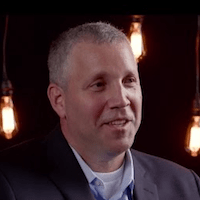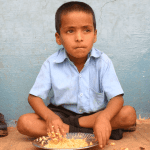The Straightest Path to Social Impact: The Power of Focusing on Farmers
When we started Unlock Impact last year, the reasons were many, ranging from the practical to the aspirational – the chief of these being that we wanted to immerse ourselves deeper in the impact sector in South and Southeast Asia. So we started working with businesses, non-profits, governments and civil society to help design and deliver inclusive and sustainable solutions that tackle poverty.
The work has been hard but the learning has been tremendous, and the experience has been inspirational. Over the past few months, especially, we were fortunate enough to work with some big organisations with far-reaching impact. And perhaps not coincidentally, their initiatives all focussed on agriculture.
In the process of personally speaking to over 40 individuals in the agriculture value chain in southern Nepal, conducting group discussions with 300 farmers all over small-town Bihar in India, and meeting with groups of villagers in rural Myanmar, I came to understand some basic truths. These highlight not only the challenges facing low-income farmers, but the significant impact that can be generated by relatively simple interventions in the sector.
The Younger Generation Wants More than Farming
Though the settings may differ, the sentiment is the same: Youngsters want to get out of agriculture. They have watched too many generations before them work too hard for too little return, and they are seeking out lower-risk blue-collar or white-collar jobs, which guarantee a somewhat steady income without exacting punishing physical labour and investment.
In rural Nepal, where we were conducting a business due diligence on a social enterprise called SunFarmer as part of Tech4Farmers under USAID an
In Myanmar too, where we were meeting customers of the startup FarmTech as part of the same Winrock programme, the primary challenge in agriculture is labour, with the bulk of young men migrating to neighbouring Thailand in search of higher-paying jobs.
What, then, of the future? Agriculture is the primary livelihood for a majority of the population (varying between 65 and 70 percent) in India, Nepal and Myanmar – a reality that extends to other countries in South and SE Asia as well. Subsistence farming continues to be the norm, leaving little room for surplus earnings, which eventually cuts off scope to invest in better technology or resources.
And then there is the larger issue of food security. By 2050, the world must be able to feed 9 billion people. The demand for food will be 60 percent greater than it is today. The United Nations has set ending hunger, achieving food security and improved nutrition, and promoting sustainable agriculture as the second of its 17 Sustainable Development Goals (SDGs) for the year 2030. Without a fresh influx of young workers, these goals will be impossible to achieve.
Farmers in Emerging Markets Need Access
In Bihar, working with GIZ and SSP, two organisations with tremendous legacy and networks, we conducted 12 workshops over 15 days with 300 small to mid-size farmers to understand their knowledge levels in the context of irrigation.
Each session was filled to the brim with interested and curious farmers – who had often travelled over 50 km by all modes of transport to get to the meeting spot, in the hope of obtaining information about technology that would help them improve cultivation. Clearly, farmer demand or interest is not the issue.
The real issue is lack of access – to knowledge, networks and marketplaces. An overwhelming majority of the farmers had never attended a meeting like this before. As one farmer from the Gaya district plaintively told me, after I’d repeatedly tried to elicit a response on what he knew of solar irrigation systems, “If I have never even seen a solar system in my life, how can I understand or tell you how it works.”
We encountered a different lack of access right across the border in Nepal, where, coincidentally, we were investigating the use of solar-powered irrigation systems. Farmers there had been given access to knowledge and technology, which had led them to cultivate more crops. But it didn’t translate into more sales and, therefore, more income because they didn’t have access to the necessary market linkages – like a middleman who could collect the produce or even a market to sell at.
An Integrated Approach to the Agriculture Value Chain
As we travelled through parts of the Myanmar delta, another truth emerged: Even the most essential of innovations that fills an undeniable need cannot work in isolation. For example, take FarmTech. Led by a very committed and capable founder, this startup is working to bring mechanical rice dryers to small millers in rural Myanmar – an innovation that could potentially double their income in just a single paddy harvest, as well as help the millers’ customers – small farmers – command better prices for their rice.
But while there is a clear need for FarmTech’s product, as well as an understanding of its value, there are other hurdles to be crossed before farmers will agree to use the dryer service – labour shortages, transport costs, missing market linkages, fluctuating prices. Even bigger farmers who could afford to invest in the rice dryer were stumped by these issues – let alone the smaller farmers who could benefit the most from the product.
The need of the hour is to move to a more integrated approach that addresses various gaps in the value chain – whether in agriculture or really any other sector. Companies like SunFarmer, which have spent a lot of time studying the market and understanding their customers, are already making this shift. They’re bringing in government and investment to move from selling only solar irrigation systems to building an agricultural value chain in the most under-served districts of Nepal.
One Intervention Can Make All the Difference
Sarita is a farmer who also runs a small village homestay in the Chitwan district of Nepal, a district that is only now getting electrified. When we met Sarita in February, she had gotten her electricity connection just the day before. Young and enterprising, bright-eyed and big-smiled, Sarita decided to invest in a small solar-powered irrigation system, procured from SunFarmer. Her goal was to counter the major water issues she and her family were facing: Not having electricity, they had to use a hand pump for all household and farming activities, which was not only time-consuming but simply did not yield enough water.
With the help of her women’s cooperative, Sarita installed the system about a year ago. A steady water supply has meant that she is now able to fulfill her household needs and irrigate her small farmland, where she cultivates vegetables. Along with improving her output of crops, the investment has allowed her to progress from owning one cow last year to owning 15 cows today. This has transformed her enterprise from a subsistence farm into a small cattle business: She is now selling milk and beginning to branch into other dairy products. An uninterrupted water supply has meant that Sarita could grow fodder, feed her cows, clean the sheds and grow her business.
Sarita’s income has noticeably gone up, and she is now involving herself more in village activities – even going so far as to organising several of the women in her village into a group to sell vegetables that they had grown themselves at the local market.
The inescapable truth here is that, when it comes down to it, simple interventions can change lives. And for a social business aiming to maximize its impact, agriculture-focused interventions are a great place to start.
Aditi Seshadri is co-founder of Unlock Impact, a platform and consultancy that partners with people and organisations to develop and deliver inclusive solutions that tackle poverty.
Main photo: Sarita, a farmer in the Chitwan district of Nepal. Credit: Unlock Impact
- Categories
- Agriculture



